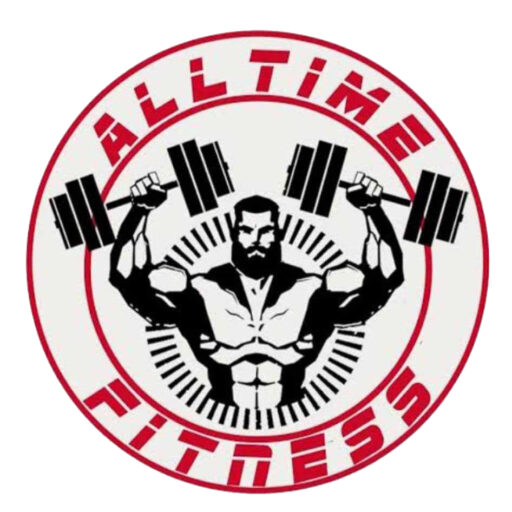Looking to kickstart your fitness journey? Wondering about the best times to work out and how to structure your exercises? We will delve into effective workout tips for beginners. Explore the advantages of workout timing and gain insight into diverse workout examples that will set you on the path to a healthier and more active lifestyle. Whether you’re a morning person or prefer evening sessions, whether cardio, strength training, or flexibility is your focus, these effective workout tips for beginners and examples will help you embark on your fitness journey with confidence and purpose.
Beneficial Times: Workout Tips for Beginners
Morning Workouts: Energize Your Day
- Benefits: Engaging in physical activity in the morning offers a variety of advantages. It jumpstarts your metabolism, contributing to increased calorie burn throughout the day. Morning exercise has been shown to enhance mood and mental alertness, setting a positive tone for the remainder of your day.
- Considerations: While morning workouts can be invigorating, the prospect of an early wake-up call might pose a challenge. Due to lower body temperature upon waking, it’s important to include a thorough warm-up to prevent injury.
Evening Workouts: Unwind and Elevate
- Advantages: Evening workouts, on the other hand, capitalize on the body’s increased body temperature and hormone levels. This can lead to improved strength and endurance during exercise. Furthermore, working out in the evening provides an opportunity to unwind after a busy day, potentially reducing stress and enhancing relaxation.
- Considerations: Despite these benefits, fatigue from daily activities and the possibility of conflicting with evening plans are factors to consider.
Finding Your Fit: Personal Preferences and Schedules
Discovering the optimal workout time for your circumstances involves a combination of listening to your body and aligning it with your daily commitments.
- Listening to Your Body: Pay attention to when you naturally feel most alert and energized. Such variations are evident among individuals.
- Personal Schedule: Consider your work hours, family responsibilities, and other commitments. Select a time that aligns with your daily routine to ensure consistency.
- Experiment and Adapt: Feel free to experiment with both morning and evening workouts to determine which suits you best. Keep in mind that your path to fitness is distinctively your own.
Workout Examples for Beginners

A. Cardiovascular Workouts
Morning: Brisk Walking or Light Jogging
- Routine: Begin your morning with a 10-minute brisk walk to gently wake up your body. Gradually transition into light jogging for 20-30 minutes.
- Benefits: This cardiovascular workout elevates your heart rate, improves circulation, and kickstarts your metabolism, providing an energetic start to your day.
Evening: Cycling or Dancing
- Routine: Consider a 30-minute session of either stationary cycling or outdoor biking. Alternatively, engage in a fun and energetic dance workout for 20-30 minutes.
- Benefits: Cycling provides a low-impact yet effective cardiovascular workout, while dancing not only improves your heart health but also uplifts your spirits.
B. Strength Training
Morning: Bodyweight Exercises
- Routine: Begin your day with 10-15 push-ups to target your chest and arm muscles. Follow this with 15-20 bodyweight squats to engage your leg muscles.
- Benefits: Incorporating bodyweight exercises enhances muscular strength, improves endurance, and helps you build a solid foundation for more advanced strength training.
Evening: Resistance Band Exercises
- Routine: Utilize resistance bands for 12-15 bicep curls and 10-12 lateral leg raises per leg. Include 12-15 resistance band rows to engage your back muscles.
- Benefits: Resistance band exercises provide versatile resistance, promoting muscle growth, joint stability, and overall functional strength.
C. Flexibility and Mobility
Morning: Yoga Poses for Flexibility
- Routine: Dedicate 15-20 minutes to practicing yoga poses that focus on stretching and flexibility. Examples include the Downward-Facing Dog, Child’s Pose, and Cobra Pose.
- Benefits: Morning yoga promotes flexibility, enhances circulation, and helps you start your day with a calm and focused mind.
Evening: Static Stretches for Mobility
- Routine: Engage in a series of static stretches for major muscle groups, holding each stretch for 20-30 seconds. Focus on hamstring, quadriceps, and calf stretches.
- Benefits: Evening stretching improves joint range of motion, reduces muscle tension, and aids in post-workout recovery.
Tips for Maximizing Your Workouts
A. Starting Strong: Warming Up and Cooling Down
- Warm-Up Routine: Dedicate 5-10 minutes to dynamic stretches such as leg swings, arm circles, and torso twists. Follow this with a few minutes of light cardio to increase blood flow to your muscles.
- Cooling Down: After your workout, engage in static stretches to promote flexibility and aid in muscle recovery. This routine helps prevent post-workout stiffness and soreness.
B. Setting Realistic Goals: Gradual Progression and Motivation
- Gradual Progression: Begin with manageable goals and incrementally increase the intensity and duration of your workouts as your fitness level improves. This approach prevents burnout and minimizes the risk of injury.
- Motivation: Stay motivated by setting both short-term and long-term goals. Celebrate each achievement, no matter how small, and track your progress to witness your advancements.
C. Proper Form and Technique: Safety and Effectiveness
- Learn Proper Form: Take the time to learn correct exercise techniques through instructional videos or guidance from a fitness professional. Proper form ensures that you target the intended muscles and minimize the risk of injury.
- Avoid Overexertion: When starting a new exercise, begin with lighter weights or lower resistance to focus on proper form before gradually increasing the challenge.
D. Rest and Recovery: Balancing Activity with Rest
- Rest Days: Incorporate regular rest days into your routine to allow your muscles time to recover and rebuild. Excessive training can result in fatigue and impede your overall progress.
- Active Recovery: On rest days, consider engaging in low-intensity activities such as walking, gentle stretching, or even meditation to promote circulation and aid in recovery.
E. Hydration and Nutrition: Fueling Your Workouts
- Hydration: Drink water before, during, and after your workouts to maintain optimal hydration levels. Lack of proper hydration can affect your performance and slow down the recovery process.
- Balanced Nutrition: Consume a balanced meal containing carbohydrates, protein, and healthy fats to fuel your workouts and support your body’s recovery process.
Commencing your fitness journey as a beginner is a courageous decision that holds the potential for transformative changes in your health and well-being. By understanding the impact of workout timing and incorporating a diverse range of exercises, you’re laying the foundation for a successful and fulfilling fitness journey.
Keep in mind that progress takes time, and the key to success is consistency and dedication. Whether you’re embracing a morning jog, an evening dance session, or a combination of strength and flexibility exercises, each step you take contributes to your overall growth and progress.
Also, Read: How to Create a Successful Workout Routine.



